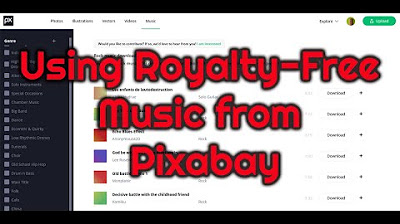How to Write a Winning Upwork Job Proposal in 2024
Summary
TLDRDanny from freelancetowin.com discusses the key elements of a winning freelance proposal on Upwork for 2021 and beyond. He outlines strategies to stand out to clients, prove your expertise, and prompt responses. Danny shares his personal success on Upwork, emphasizing the importance of a succinct proposal that initiates a conversation rather than a hard sell. He provides actionable tips on crafting an introduction, showcasing relevant work, and ending with a clear call to action, all aimed at securing more freelance opportunities.
Takeaways
- 😀 The presenter emphasizes the importance of writing great proposals for success on Upwork.
- 🔍 The presentation aims to teach how to stand out, show fit for a project, position as an authority, and answer screening questions effectively.
- 🏆 The speaker has earned significant income on Upwork and shares strategies from personal experience and a popular blog.
- 🔑 The strategies are designed to be applicable across various work categories, not just writing.
- 📈 Clients are busier with more choices and higher expectations, presenting both challenges and opportunities for freelancers.
- 💡 A winning proposal should be powerful, succinct, and aim to start a conversation rather than close a deal immediately.
- 📝 The proposal is part of a broader process to acquire new clients, focusing on initiating dialogue.
- 👋 A brief introduction in the proposal should grab attention, build rapport, and show the client's job post was read.
- 🔑 Showing relevant work examples is crucial to demonstrate capability and alleviate client concerns about project fit.
- 🤝 Tour guiding clients through your work helps position you as an authority and sets expectations for the work you'll deliver.
- ☎️ A clear call to action in proposals, like asking a question or suggesting a call, prompts client responses and moves the conversation forward.
Q & A
What are the key elements of a winning proposal according to Danny from freelancetowin.com?
-The key elements of a winning proposal are a brief introduction to grab attention, proof that you can do a great job by showing relevant work examples, and a clear call to action to prompt client response.
How can a freelancer stand out to clients even if new to Upwork?
-A freelancer can stand out by crafting a personalized brief introduction, showcasing relevant work examples, and demonstrating expertise in the field, regardless of being new to Upwork.
What is the purpose of a brief introduction in a proposal?
-The purpose of a brief introduction in a proposal is to get the client's attention, start building rapport, and show the client that you have read and understood their job post.
How does Danny suggest using personal connection introductions in proposals?
-Danny suggests using personal connection introductions by making spontaneous, unique statements related to the client or situation, such as genuine compliments or shared experiences, to serve as conversation starters.
What is the affirmation approach mentioned by Danny?
-The affirmation approach is a method where you repeat back the client's stated needs from their job post as a way to introduce yourself and show that you understand their requirements.
Why is showing relevant work examples important in a proposal?
-Showing relevant work examples is important because it tangibly demonstrates your skills, alleviates the client's concerns about your ability to perform on their specific project, and helps you stand out from other freelancers who may not provide such examples.
How can freelancers who are new to Upwork or freelancing show their capabilities if they lack a portfolio?
-New freelancers can create hypothetical work samples relevant to the job they're applying for, such as writing landing page copy for a fictitious app, to demonstrate their capabilities even without a traditional portfolio.
What is 'tour guiding' as described by Danny, and why is it beneficial?
-'Tour guiding' is the process of walking the client through your work, explaining its relevance and highlighting its key points and quality. It's beneficial as it increases the perceived value of your work, positions you as an authority, and sets expectations for the client.
How should freelancers handle proposals if they can't show relevant work examples?
-If unable to show relevant work examples, freelancers should discuss relevant work experiences, share knowledge or expertise, offer helpful suggestions for the project, and use testimonials to back up their claims.
What are the two main types of clear call to actions that Danny recommends to end a proposal?
-The two main types of clear call to actions are asking a question about the project to prompt a response or inviting the client to a brief call to discuss the project further.
Why does Danny advise against discussing details like timeline or scheduling in the initial proposal?
-Danny advises against discussing details like timeline or scheduling in the initial proposal because the focus should be on starting a conversation and determining if there's a good fit, rather than getting into specifics too early.
Outlines

此内容仅限付费用户访问。 请升级后访问。
立即升级Mindmap

此内容仅限付费用户访问。 请升级后访问。
立即升级Keywords

此内容仅限付费用户访问。 请升级后访问。
立即升级Highlights

此内容仅限付费用户访问。 请升级后访问。
立即升级Transcripts

此内容仅限付费用户访问。 请升级后访问。
立即升级浏览更多相关视频

There's a MASSIVE difference between BF4 vehicles you didn't know about - Battlefield 4

Pearl Harbor: RESUMEN EN 8 MINUTOS

The One Catfish Reveal NO ONE Saw Coming 🤭 Catfish: The TV Show

Using Pixabay for Royalty-Free Music to use in your YouTube Videos

20 WOMEN VS 2 SIDEMEN: ANGRY GINGE & DANNY AARONS EDITION

【精华版】|Fibromat Berhad | 如何从经济金融危机变为转机 | 公司收入因为马来西亚预算案即将迎来增长?!?! | 【乐学成长空间 - LXInvest】
5.0 / 5 (0 votes)
